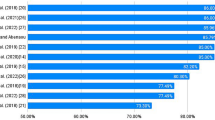Abstract
The article considers one of the approaches to the solution of the problem of finding the effect of a user on the Internet through media files including acoustic materials. The solution to the given problem is a part of the project on the development of a uniform socio-cyberphysical control system of the Internet content to identify the destructive materials and protect Internet users. Authors developed an algorithm including a classification model based on an artificial neural network (1D CNN-based) with the application of deep learning and the further application of the statistical probability approach to the solution of the problem of identification of the destructive type of emotion with the accuracy of 74%. The article considers one of the approaches to solving the problem of identifying the impact on the Internet of a user through media files, including acoustic materials. The solution to this problem is an integral part of the project to create a unified socio-cyberphysical system for managing Internet content in order to identify destructive materials and protect network users.
Access this chapter
Tax calculation will be finalised at checkout
Purchases are for personal use only
Similar content being viewed by others
References
Iskhakova, A., Iskhakov, A., Meshcheryakov, R.: Research of the estimated emotional components for the content analysis. In: Journal of Physics: Conference Series, vol. 1203, pp. 012065 (2019)
Kulagina, I., Iskhakova, A., Galin, R.: Modeling the practice of aggression in the socio-cyber-physical environment. Vestnik tomskogo gosudarstvennogo universiteta-Filosofiya-Sotsiologiya-Politologiya-Tomsk state Univ. J. Phil. Sociol. Polit. Sci. 52, 147–161 (2019). (in Russian)
Levonevskii, D., Shumskaya, O., Velichko, A., Uzdiaev, M., Malov, D.: Methods for determination of psychophysiological condition of user within smart environment based on complex analysis of heterogeneous data. In: Ronzhin, A., Shishlakov, V. (eds.) Proceedings of 14th International Conference on Electromechanics and Robotics “Zavalishin’s Readings”. SIST, vol. 154, pp. 511–523. Springer, Singapore (2020). https://doi.org/10.1007/978-981-13-9267-2_42
Malov, D., Shumskaya, O.: Audiovisual content feature selection for emotion recognition system. In: International Conference Cyber-Physical Systems and Control CPS&C (2019)
Zheng, W.-L., Zhu, J.-Y., Yong, P., Lu, B.-L.: EEG-based emotion classification using deep belief networks. In: IEEE International Conference on Multimedia & Expo IEEE, pp. 1–6. Chengdu, China (2014)
Han, K., Yu, D., Tashev, I.: speech emotion recognition using deep neural network and extreme learning machine. In: INTERSPEECH, pp. 223–227 (2014)
Haq, S., Jackson, P.J.B.: Multimodal emotion recognition. In: Machine Audition. Principles, Algorithms and Systems, vol. 17, pp. 398–423. IGI Global Press (2010)
Burkhardt, F., Paeschke, A., Rolfes, M., Sendlmeier, W., Weiss, B.: A database of German emotional speech. In: 9th European Conference on Speech Communication and Technology, Lisbon, Portugal, vol. 5, pp. 1517–1520 (2005)
Serrestou, Y., Mbarki, M., Raoof, K., Mahjoub, M.: Speech emotion recognition: methods and cases study. In: Proceedings of the 10th International Conference on Agents and Artificial Intelligence (ICAART 2018), vol. 2, pp. 175–182 (2018)
Hossan, M.A., Memon, S., Gregory, M.A.: A novel approach for MFCC feature extraction. In: 2010 4th International Conference on Signal Processing and Communication Systems, Gold Coast, QLD, Australia, pp. 1–5 (2010)
Niu, Y., Zou, D., Niu, Y., He, Z., Tan, H.: A breakthrough in speech emotion recognition using deep retinal convolution neural networks. https://arxiv.org/abs/1707.09917. Accessed 21 July 2020
Oludare, A., Aman, J.: Comprehensive review of artificial neural network applications to pattern recognition. In: IEEE Access, vol. 7, pp. 158820–158846 (2019)
Kim, Y.: convolutional neural networks for sentence classification. In: Proceedings of the 2014 Conference on EMNLP, Doha, Qatar, pp. 1746–1751 (2014)
Dupuis, K., Kathleen, M.: Toronto emotional speech set (TESS). https://doi.org/10.5683/SP2/E8H2MF. Accessed 21 July 2020
Busso, C., et al.: IEMOCAP: interactive emotional dyadic motion capture database. https://sail.usc.edu/iemocap/iemocap_release.htm. Accessed 21 July 2020
Zhang, L., et al.: BioVid Emo DB: a multimodal database for emotion analyses validated by subjective ratings. In: 2016 IEEE Symposium Series on Computational Intelligence (SSCI), Athens, pp. 1–6 (2016)
Fayek, H.M., Lech, M., Cavedon, L.: Towards real-time Speech Emotion Recognition using deep neural networks. In: International Conference on Signal Processing and Communication Systems 2015, Cairns, QLD, Australia, pp. 1–5 (2015)
Aleshina, T.S., Redko, AYu.: Bases of speech data corpus preparation for the emotional speech recognition. Mod. High Technol. 6(2), 229–233 (2016). In Russ
Mahesh, C.M., Matthias, H.: Variants of RMSProp and adagrad with logarithmic regret bounds. In: Proceedings of the 34th International Conference on Machine Learning, Sydney, Australia (2017)
Bottou, L.: Large-scale machine learning with stochastic gradient descent. In: Lechevallier Y., Saporta G. (eds.) Proceedings of COMPSTAT 2010, pp. 177–186. Physica-Verlag HD (2010)
Ispas, I., Dragomir, V., Dascalu, M., Zoltan, I., Stoica, C.: Voice based emotion recognition with convolutional neural networks for companion robots. Rom. J. Inf. Sci. Technol. 20(3), 222–240 (2017)
Mower, E., Mataric, M.J., Narayanan, S.S.: A framework for automatic human emotion classification using emotional profiles. IEEE Trans. Audio Speech Lang. Process. 19(5), 1057–1070 (2011)
Acknowledgements
The reported study was partially funded by RFBR, project number №18-29-22104.
Author information
Authors and Affiliations
Corresponding author
Editor information
Editors and Affiliations
Rights and permissions
Copyright information
© 2020 Springer Nature Switzerland AG
About this paper
Cite this paper
Iskhakova, A., Wolf, D., Meshcheryakov, R. (2020). Automated Destructive Behavior State Detection on the 1D CNN-Based Voice Analysis. In: Karpov, A., Potapova, R. (eds) Speech and Computer. SPECOM 2020. Lecture Notes in Computer Science(), vol 12335. Springer, Cham. https://doi.org/10.1007/978-3-030-60276-5_19
Download citation
DOI: https://doi.org/10.1007/978-3-030-60276-5_19
Published:
Publisher Name: Springer, Cham
Print ISBN: 978-3-030-60275-8
Online ISBN: 978-3-030-60276-5
eBook Packages: Computer ScienceComputer Science (R0)




